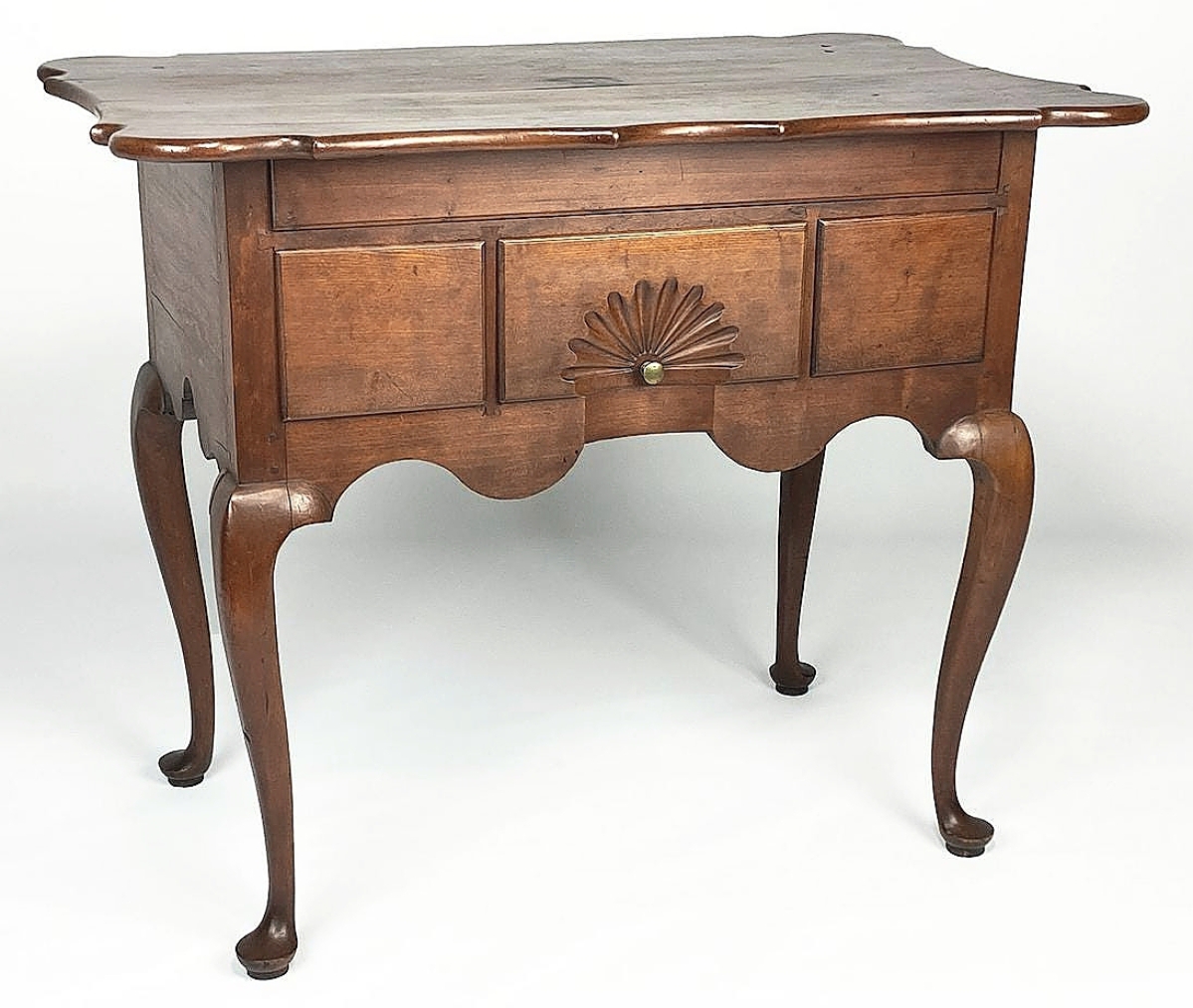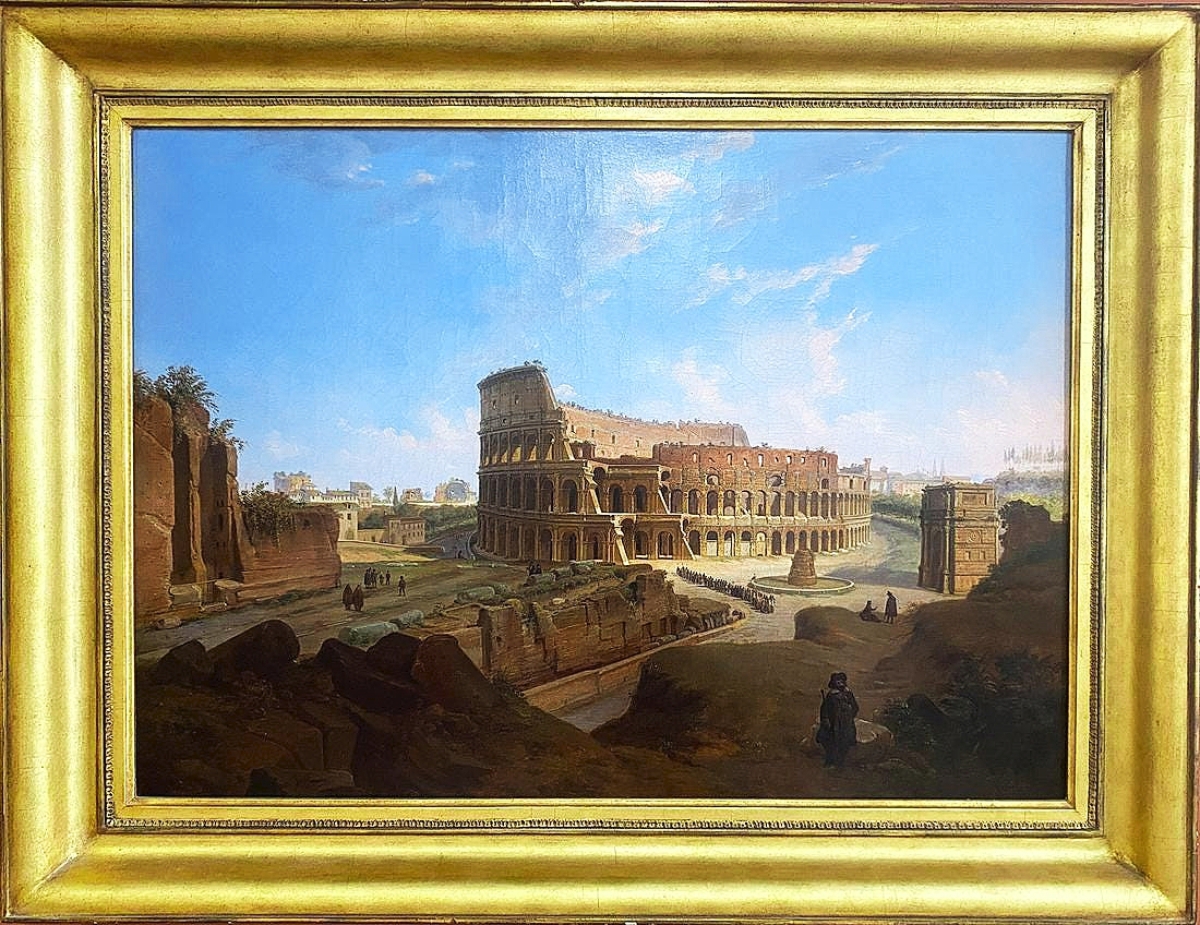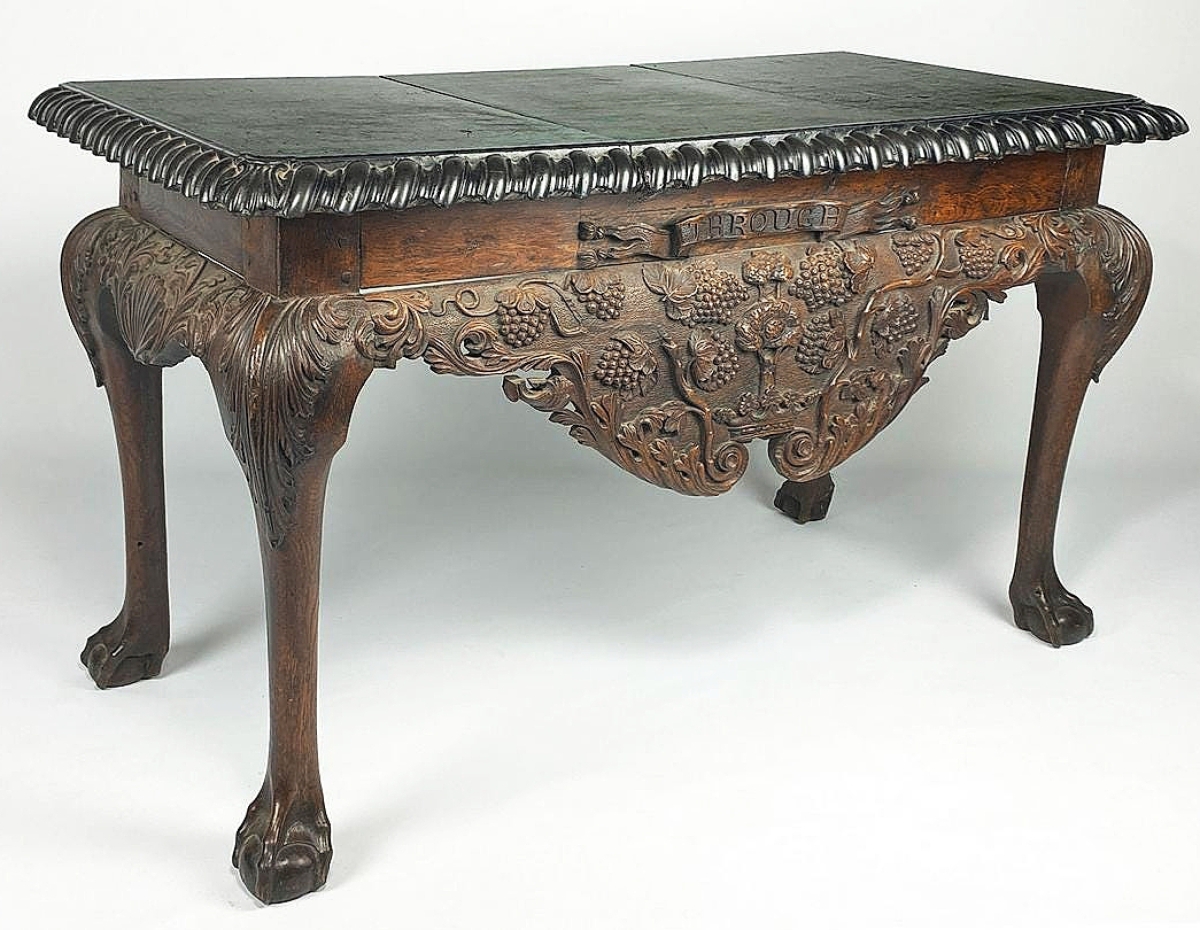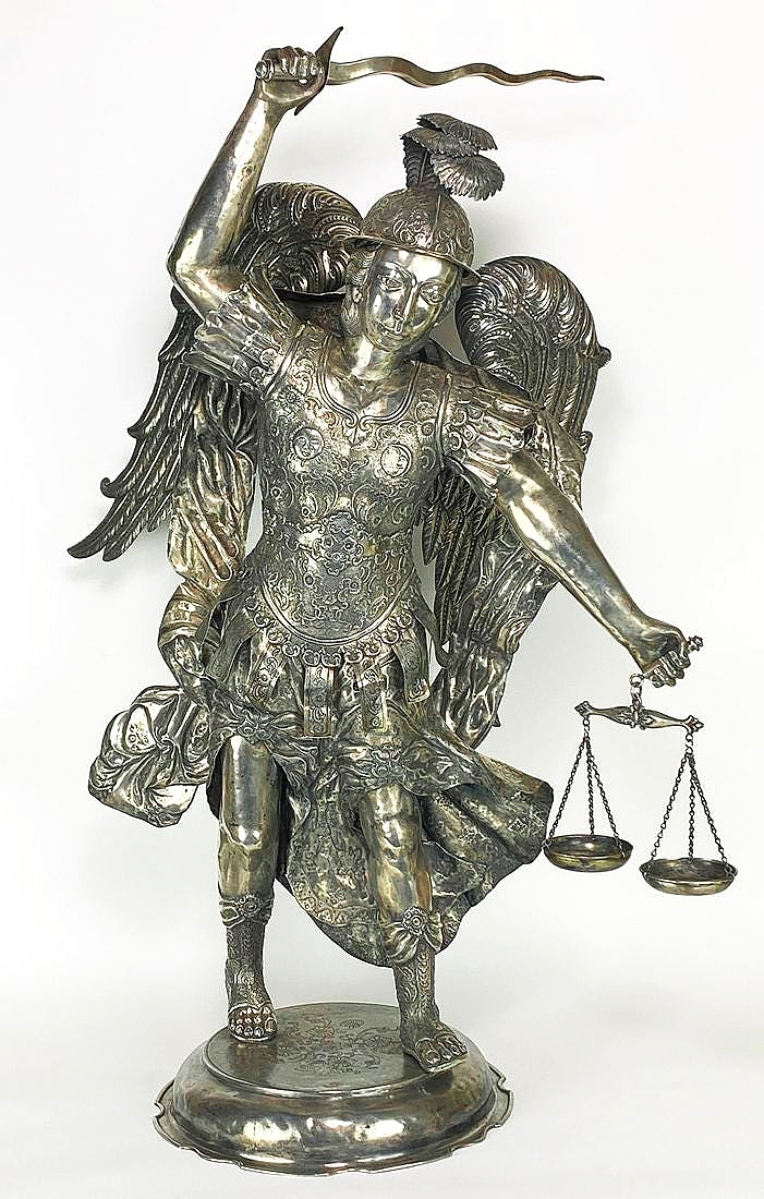
A Queen Anne scalloped top dressing table, probably from Wethersfield, Conn., led the selection of American furniture, both in terms of dollars achieved, $40,260, and in presale interest. Scalloped top examples are exceedingly rare, with perhaps fewer than a dozen examples known.
Review and Onsite Photos by Rick Russack, Additional Photos Courtesy CRN Auctions
CAMBRIDGE, MASS. – It was a home run, or, if we’re using a baseball metaphor to describe CRN’s June 20 sale, perhaps “no-hitter” would be a better term as they occur much less often. Karin Philips and Carl Nordblom continued with their regular schedule of sales during the pandemic, concentrating on maintaining quality and variety. That allowed them to continue with the research necessary to comprehensively catalog, photograph and describe their offerings, allowing European and South American buyers to bid with confidence. The sale, which grossed just under $1 million, included high-quality American furniture, Irish furniture, a select group of Oriental rugs, American and European paintings, Chinese export porcelains and bronzes. In addition, there was a large collection of marine chronometers, Louis Vuitton luggage and more. The sale was strong in all categories, with more than 20 items bringing five-figure prices. There were about 30 buyers in the room, several phone lines were in use, internet bidding was used, and absentee bids were processed.
American and Irish furniture found willing buyers. A Queen Anne Wethersfield, Conn., scalloped top dressing table led the selection of American furniture, both in terms of dollars achieved – $40,260 – and presale interest. The form is exceptionally rare, with perhaps no more than a dozen examples known. Nordblom acknowledged during the preview that it was difficult to estimate a price for the piece. A similar example fetched more than $300,000 at Sotheby’s sale of the Keene collection in 1997. This example, with solid provenance, probably had been made in Wethersfield circa 1740-80. The fan-carved cherry dressing table had one long drawer over three short ones, none of which had ever been drilled for hardware. A very similar example had been pictured in Albert Sack’s New Fine Points of Furniture. Almost certainly from the same shop as CRN’s, Sack had written, “this piece is a study in symmetry achieved in a daring composition. …The cyma-curved top is successfully balanced by a well-formed case and a beautiful silhouette.” Kevin Tulimieri of the Colchester, Conn., dealer Nathan Liverant and Sons, examined it closely during the preview, saying, “It’s such a pure and simple piece. I don’t think there are more than a dozen dressing tables known,” The form is also discussed in Connecticut Valley Furniture, Eliphalet Chapin and His Contemporaries, 1750-1890. Nordblom later said that the consignor was very pleased with the price it achieved. A Connecticut cherry Queen Anne highboy, cataloged as “most likely by the same hand” sold for $6,710, possibly to the same phone bidder.

There were two paintings of Roman ruins by French artist Jean Victor Louis Faure and they brought two of the three highest prices of the day. This overview of the Roman Coliseum sold for $42,700, and a matching overview of the Roman Forum sold for $39,040.
A group of early Connecticut banister back chairs were surprising, some selling at prices far in excess of their estimates. A William and Mary banister back armchair, circa 1730-80, realized more than $18,300. It had old red paint, bold finials and a cut-out domed crest. From the same collection, a simpler chair from the same time period, with ball and urn finial, and flat arms, brought $9,760.
It wasn’t only American furniture that did well. An Irish circa 1755 George II heavily carved walnut slate top console table realized $21,960, almost three times the estimate. The deep apron was carved with bunches of grapes and vines, and it bore a carved banner above, reading “Through.”
A collection of paintings of Malta proved to be one of the major surprises of the sale. The collection had been assembled by a Massachusetts couple who had a home on Malta, and nearly all were bought by buyers who were returning them to Malta, a group of three islands in the Mediterranean Sea. During the preview, Nordblom commented, “I couldn’t believe the interest in this group.” As the first painting came up, all the folks who had been handling phone bidders took a break – all the bidding was on the internet. Four of the paintings were done by Luigi Maria Galea (1847-1917), who worked on the islands. The first, a finely detailed panoramic view of Mdina, Malta, estimated at $2,000, realized $13,420. Early episodes of The Game of Thrones were filmed on Mdina, but the film-makers were banned from the island for damaging scenic places. The second Galea to be sold, a detailed, panoramic view of Valletta, Malta, with figures and sheep, estimated at the same $2,000, realized $18,300. Results were similar for other paintings of the islands.

The selection of Irish furniture was led by a circa 1755 George II heavily carved walnut, slate top console table, which realized $21,960. The deep apron was carved with bunches of grapes and vines, and it bore a carved banner above, reading “Through.”
In general, other paintings also did well, representing four of the eight highest priced items in the sale. There were two paintings of Roman ruins by French artist Jean Victor Louis Faure (1786-1879) and they brought the highest and third highest prices of the day. An overview of the Roman Coliseum sold for $42,700, and a matching overview of the Roman Forum sold for $39,040. Both were scenes Faure painted frequently. A very similar painting of the forum sold for more than $50,000 at Bonham’s in 2016. A marine scene depicting ships in a stormy sea by American painter Hermann Herzog (1832-1932) earned $21,960, and another work by a French painter, Theobald Chartran (1849-1907), was also among the top eight lots, finishing at $19,520. This was a full-length portrait of an attractive woman in Mideastern dress carrying a tray of fruit.
CRN’s last few auctions have been dispersing a wonderful collection of Spanish colonial silver, and this sale had several more pieces. The collection had been put together over a 35-year period. Karin Philips’ catalog entries are informative, and most of the pieces have been bought by buyers in South and Central America. The workmanship on these pieces shows the abilities of the native artisans who had been trained by Jesuits and other Catholic missionaries. A 46-inch-tall figure, an archangel with two large wings, clad in chased and embossed silver armor, holding a sword and a scale and wearing a three-feathered helmet, brought the top price of the selection this time, finishing at $24,400. It had been made by Pedro de Avila, a Mexican silversmith, circa 1770-88. Saint Michael is usually shown with a shield as the Defender of God. The angel holding the scale is a slightly different presentation. Another outstanding piece was an incised morro nut, hollowed out and also covered with chased and embossed silver in the form of a turkey. It had applied feathers, feet, tail and head and a small, hinged door, which allowed access to the hollowed-out nut, indicating that it was probably used as a money storage box. It dated to 1780-90 had been made in Guatemala. It sold for $2,928. There were a number of other pieces, including silver mounted gourds and coconuts, also with exquisite workmanship.

CRN’s recent sales have included portions of an exceptional collection of colonial Spanish silver. The outstanding piece in this sale was a late Eighteenth Century, 46-inch-tall archangel clad in chased and embossed silver armor, holding a sword and a scale and wearing an elaborate helmet, which brought $24,400.
One of the enjoyable things about CRN sales is that you never know what might be included. This one had a large photo of Victoria’s Secret models, a collection of Staffordshire children’s plates, Sandwich glass, a shell encrusted Roman amphora salvaged from the ocean, tea caddies, a fancy Victorian birdcage, scrimshaw, a Charles Dickens manuscript letter and other unusual items.
It was a strong sale, and a few days later, Nordblom commented, “We were strong across the board. There’s no way to complain when the gross is up around $1 million. The buyers in the audience knew what they came for, and I was glad to see that some things went to retail buyers in the room. We’re looking forward to the next one.”
All prices given include the buyer’s premium as stated by the auction house.
For additional information, www.crnauctions.com or 617-661-9582.






























